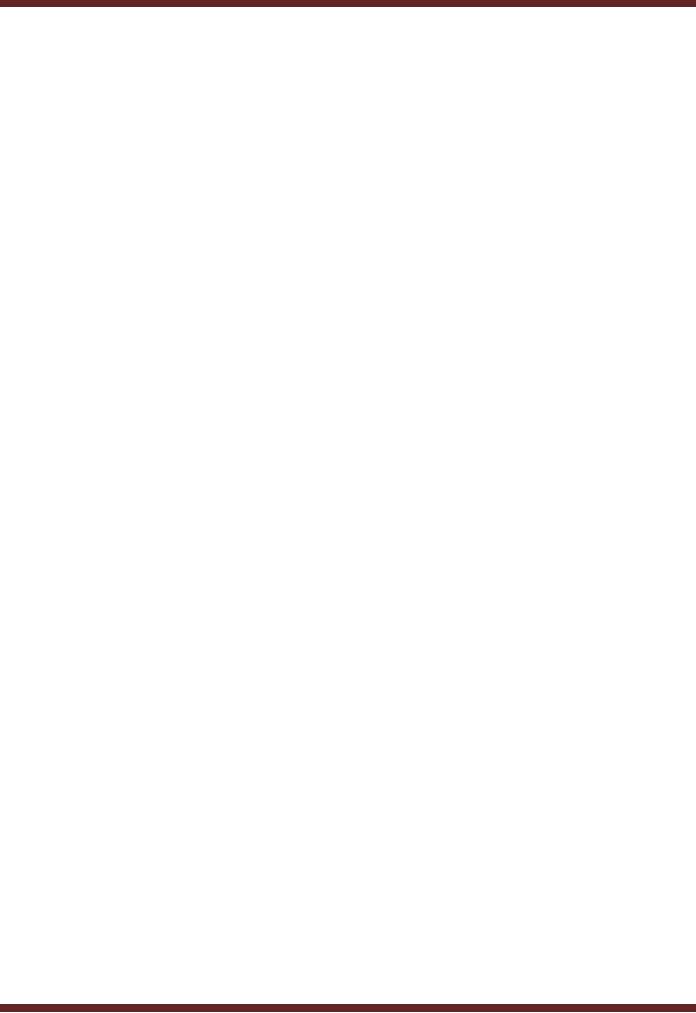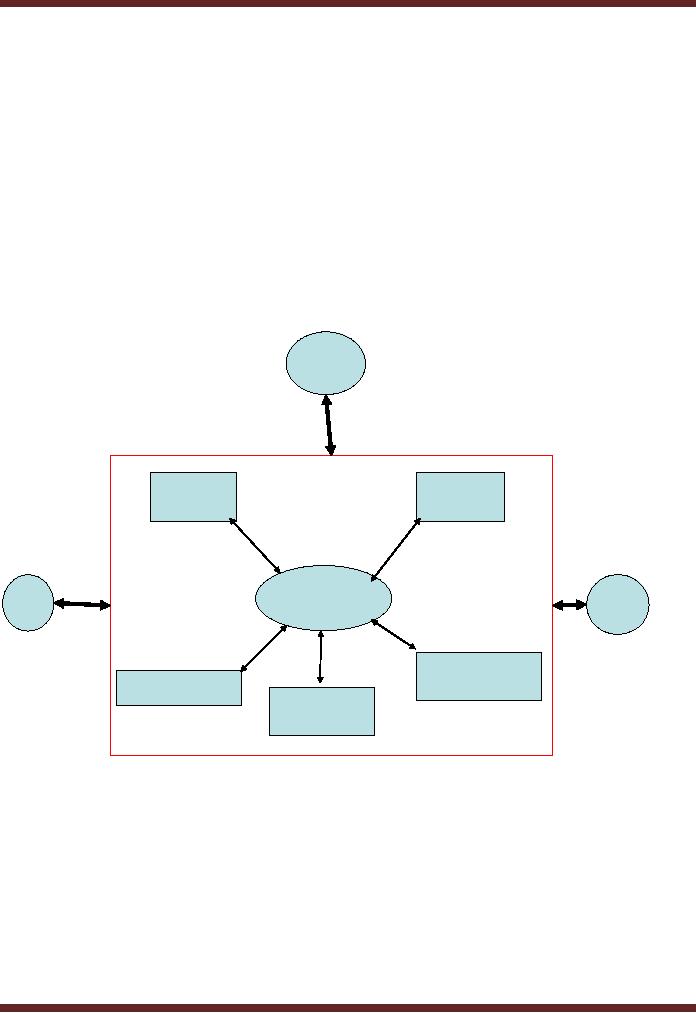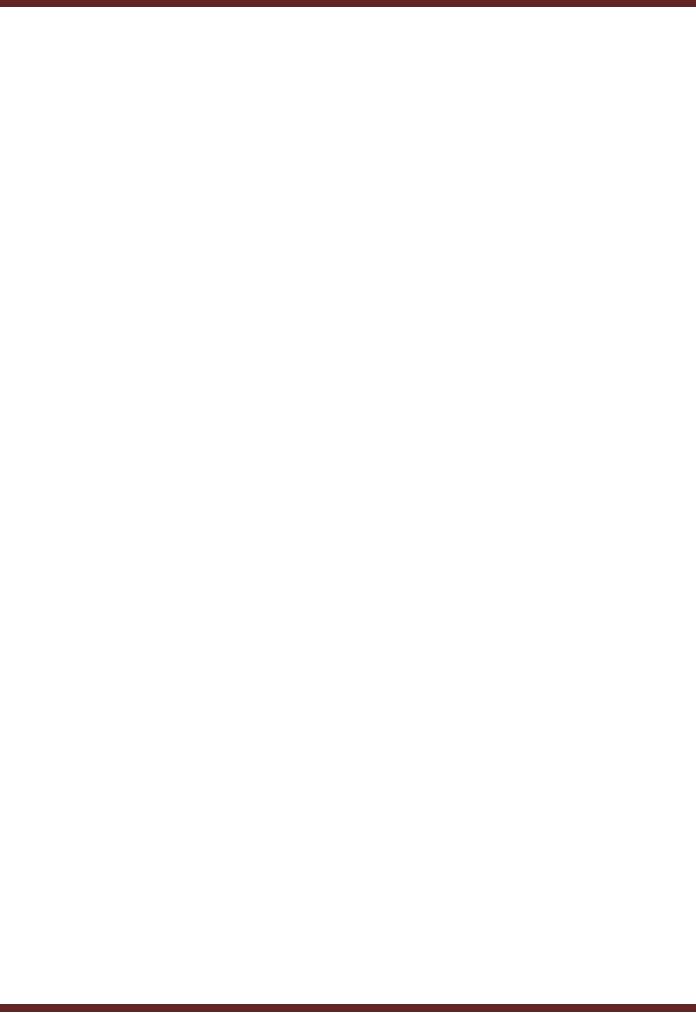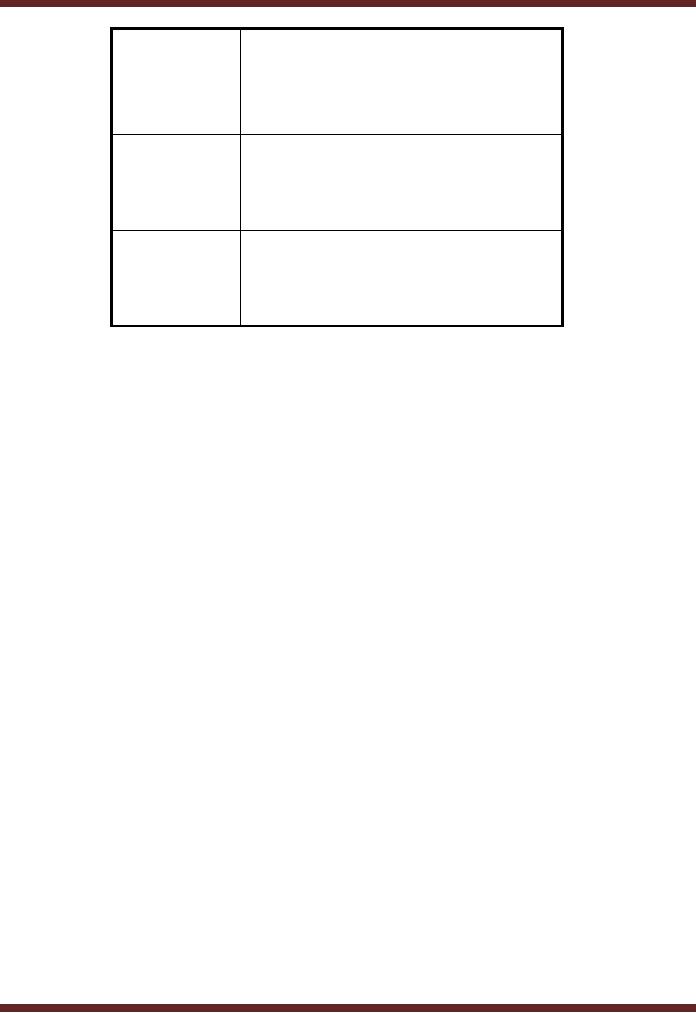 |

VU
Information
System (CS507)
LESSON
42
Supply
Chain Management
Introduction
The
business in the globalization
age is more about enhanced
efficiencies, increased
productivity
resulting
in lower costs of production,
quick and effective decision
making increased outreach
and
customer/client satisfaction and sharing knowledge
across institutions. This
enables a
business
to become a more effective player in
the free and extremely
competitive global market.
Globalization
encompasses the concept of moving
beyond the geographical
boundaries of a
country
and using technological advances to
maximum advantage for the
business. The
internet
and
Web technologies have brought
new dimensions to doing and
managing business. E-
Commerce
we have talked about. Obviously every
business has some inherent
risks. So does E-
Commerce.
For example, privacy, legality,
taxation are issues that
pose a challenge for a good
E-
business
environment although measures
both legislative and operational
have been taken and
continue
to be devised. As far as Management
Information Systems for
businesses are
concerned
these too have undergone a
major change particularly
with the availability of
Internet.
Gone are the days of
the stand alone systems
which looked at each aspect of
the
business
separately. Today we are
talking of end to end
solutions for businesses. In
other words
business
imperatives have driven us to re-define
the scope of the coverage/
extant of
management
information systems. The
Buzzword for some time
now is " ENTERPRISE
RESOURCE
PLANNING." (ERP).
The
stand alone systems scope
required a singular approach to each
aspect of the
business.
Why?
Perhaps at that time the
security issues could not be handled in
any other way. Perhaps it
was
much cheaper to employ
people to consolidate and produce
MIS for all aspects,
time taken
being
of little or no consequence. Perhaps
this is what technology allowed
us. Packaged or
customized software
was now available. We move
on and find ourselves with
an enhanced
scope
which requires all aspects
of the business to be integrated. This
meant that
issues/transactions
of each department which had
always impacted other departments
had to be
integrated in such
fashion that the resulting
MIS was complete in all
respects. Thus was laid
the
foundation
of the Customized Integrated software
development and packages.
The use of the
web
and internet expanded the
scope further requiring on
line transfer of data and
real time
functionalities.
This
lead to a further increase in
the scope where we started demanding an
analysis of the data
as an integral
part of the software used by a
business regardless of its size. It
also created a new
demand
for bringing the entire
supply chain into the
perspective as well as the Consumer.
The
result
of the enhancement of scope lead to
the Customized integrated software
approach
becoming an
Enterprise Resource Management Software of
which MIS was an integral
part.
Since
then we have re-defined the
scope to include Planning, Supply Chain
and Customers
resulting
in what is today referred to as the ERP. Certain
software developers around the
world
then
decided to produce generic versions of ERP
for various industries which could be
installed
straight
off without having to spend
time on the development
process of a customized
integrated
software. Obviously the generic versions
required that your business
systems and
processes
must be aligned exactly in accordance
with its design. This gave
rise to the concept of
BPR.
The versions were too
expensive to be modified and it
was deemed that it would
be
cheaper
to re-align the business
processes.
181

VU
Information
System (CS507)
BPR
was not simply of
redesigning certain input forms
but involved changed
practices of
working.
It involved change in human
thought and approaches to
their routine, mundane
tasks.
This
raised issues of Change Management.
Since the ERP generic models
need to be
implemented
this work is also required to be
undertaken and involves
training of the staff
and
transfer/conversion
of data in the legacy
system. Thus it is not a
simple straight
forward
proposition
but involves detailed and
phased approach towards successful
implementation at
considerable
cost. The ERP approach,
essentially meant for a highly
computerized Society,
assumes
that for it to be used from
one end of the business to
the other everyone is connected
and
uses computers. Therein lies a
major challenge to make such a
system a success in a
developing
country, like Pakistan, and
raises questions in terms of financial
viability and
suitability.
Perhaps it is time to go back
and look at the integrated
approach.
42.1
Integrating systems
Let's
take a look what an
integrated information system
looks like.
Users
Financial
Marketing
Information
Information
System
System
Integrated
Information
Suppliers
Customers
system
Information
Resource
Human
Resource
Information
System
Information
System
Manufacturing
Information
System
As
seen in the above picture
all systems are interfaced
with one another, the input
in one system
automatically
updating the data in the
other relevant system. We
thus observe simultaneous
Data sharing
between various systems and simultaneous
execution of different
business
processes.
For Example, a confirmed
sales order received by the
sales department from
the
customer
will once entered into
the sales system
automatically provide data
input to
stores/packing/
shipping and possibly the production
systems. Thus ensuring that
all relevant
departments
are notified of ready for
necessary action
simultaneously.
42.2
Methods of integration
Information
systems can be integrated in the
following ways.
� Connect
Existing modules/system
182

VU
Information
System (CS507)
�
Use
Supply Chain Management (SCM) Software
�
Use
ERP Software
Connect
Existing Modules/system
The
basic concept is to maximize the use of
existing systems and minimize
the changes in them.
Good
integration allows the addition of
new applications to existing ones and
the connection of
systems
to intranets and the
internet. This approach
extends the life of applications
and saves
tremendous
amounts of money. However,
connecting existing system may be
difficult and
expensive
in many cases. Old systems
were built and developed
over a number of
years
encompassing
technologies and platforms of various
specifications.
42.3
Using
SCM Software
Supply chain
management (SCM) is the
process of planning, implementing,
and controlling the
operations of
the supply chain with the
purpose to satisfy customer requirements as
efficiently
as
possible. Supply chain management spans
all movement and storage of
raw materials, work-
in-process
inventory, and finished
goods from point-of-origin to
point-of-consumption. In
literal
terms, supply chain refers to the
flow of materials from their
sources (suppliers) to the
company
and then inside the
company for processing.
Today the concept is much
broader,
including
flow of materials, information, payments,
and services from suppliers
to factories and
warehouses
to end customers. This reduces
uncertainty and risks in the
supply chain thereby
positively
affecting inventory levels,
cycle time, business
processes.
42.4
Components
of Supply Chain
The
concept of supply chain can be divided
into three major
parts.
�
Upstream
supply chain segment includes the
organization's first-tier
suppliers
(manufacturers
and assemblers). The major
activities are purchasing and
shipping.
�
Internal
supply chain segment includes all
the processes to transform
inputs to outputs.
�
Downstream
supply chain segment includes
distributing, delivering to customer and
final
consumption
of the product.
Example
For a
car manufacturer industry
the above three segments
can be shown as
follows.
183

VU
Information
System (CS507)
Upstream
Vendors to
the manufacturers.
Segment
Sub-
Vendors or Suppliers to
the
Vendors or
Suppliers to the
manufacturer.
Internal
Manufacturing
plants, Assembly
Segment
plants,
Packaging, warehouses,
dealers.
Downstream
Banks, transportation
companies,
Segment
distributors,
wholesalers, retailers.
42.5
Types of
Supply Chains
Supply chain
may exist in various forms depending on
the need of the
business:
1.
Made to Store Focuses on
tracking customer demand in real
time, so that the
production
process
can restock the finished
goods inventory.
2.
Continuous Replenishment focuses on
constant replacement of inventory by
working
closely
with suppliers. Applicable to
environments with stable
demand patterns.
3.
Built to order Focuses on
careful management of component
inventories and delivery
of
needed
supplies along the supply chain. A
solution to this potential
inventory problem is to
utilize
many common components
across several production
lines and in several
locations.
Challenges
to supply chains
There
are usually two major
sources of challenges to supply
chains.
1. The
uncertainties faced
a.
Demand forecast
b.
Competition
c. Weather
conditions
d.
Technological development
2. The
need to coordinate several
activities
a.
Business partners are
misunderstood
b.
Departments are not well
connected
184
Table of Contents:
- Need for information, Sources of Information: Primary, Secondary, Tertiary Sources
- Data vs. Information, Information Quality Checklist
- Size of the Organization and Information Requirements
- Hierarchical organization, Organizational Structure, Culture of the Organization
- Elements of Environment: Legal, Economic, Social, Technological, Corporate social responsibility, Ethics
- Manual Vs Computerised Information Systems, Emerging Digital Firms
- Open-Loop System, Closed Loop System, Open Systems, Closed Systems, Level of Planning
- Components of a system, Types of Systems, Attributes of an IS/CBIS
- Infrastructure: Transaction Processing System, Management Information System
- Support Systems: Office Automation Systems, Decision Support Systems, Types of DSS
- Data Mart: Online Analytical Processing (OLAP), Types of Models Used in DSS
- Organizational Information Systems, Marketing Information Systems, Key CRM Tasks
- Manufacturing Information System, Inventory Sub System, Production Sub System, Quality Sub system
- Accounting & Financial Information Systems, Human Resource Information Systems
- Decision Making: Types of Problems, Type of Decisions
- Phases of decision-making: Intelligence Phase, Design Phase, Choice Phase, Implementation Phase
- Planning for System Development: Models Used for and Types of System Development Life-Cycle
- Project lifecycle vs. SDLC, Costs of Proposed System, Classic lifecycle Model
- Entity Relationship Diagram (ERD), Design of the information flow, data base, User Interface
- Incremental Model: Evaluation, Incremental vs. Iterative
- Spiral Model: Determine Objectives, Alternatives and Constraints, Prototyping
- System Analysis: Systems Analyst, System Design, Designing user interface
- System Analysis & Design Methods, Structured Analysis and Design, Flow Chart
- Symbols used for flow charts: Good Practices, Data Flow Diagram
- Rules for DFD’s: Entity Relationship Diagram
- Symbols: Object-Orientation, Object Oriented Analysis
- Object Oriented Analysis and Design: Object, Classes, Inheritance, Encapsulation, Polymorphism
- Critical Success Factors (CSF): CSF vs. Key Performance Indicator, Centralized vs. Distributed Processing
- Security of Information System: Security Issues, Objective, Scope, Policy, Program
- Threat Identification: Types of Threats, Control Analysis, Impact analysis, Occurrence of threat
- Control Adjustment: cost effective Security, Roles & Responsibility, Report Preparation
- Physical vs. Logical access, Viruses, Sources of Transmissions, Technical controls
- Antivirus software: Scanners, Active monitors, Behavior blockers, Logical intrusion, Best Password practices, Firewall
- Types of Controls: Access Controls, Cryptography, Biometrics
- Audit trails and logs: Audit trails and types of errors, IS audit, Parameters of IS audit
- Risk Management: Phases, focal Point, System Characterization, Vulnerability Assessment
- Control Analysis: Likelihood Determination, Impact Analysis, Risk Determination, Results Documentation
- Risk Management: Business Continuity Planning, Components, Phases of BCP, Business Impact Analysis (BIA)
- Web Security: Passive attacks, Active Attacks, Methods to avoid internet attacks
- Internet Security Controls, Firewall Security SystemsIntrusion Detection Systems, Components of IDS, Digital Certificates
- Commerce vs. E-Business, Business to Consumer (B2C), Electronic Data Interchange (EDI), E-Government
- Supply Chain Management: Integrating systems, Methods, Using SCM Software
- Using ERP Software, Evolution of ERP, Business Objectives and IT
- ERP & E-commerce, ERP & CRM, ERP– Ownership and sponsor ship
- Ethics in IS: Threats to Privacy, Electronic Surveillance, Data Profiling, TRIPS, Workplace Monitoring